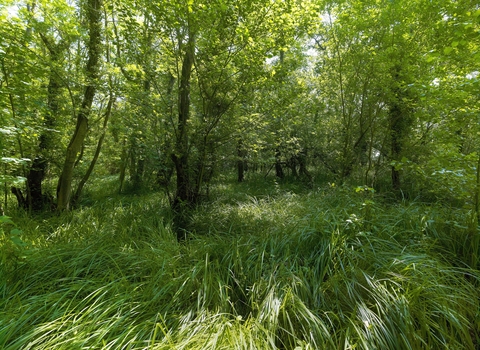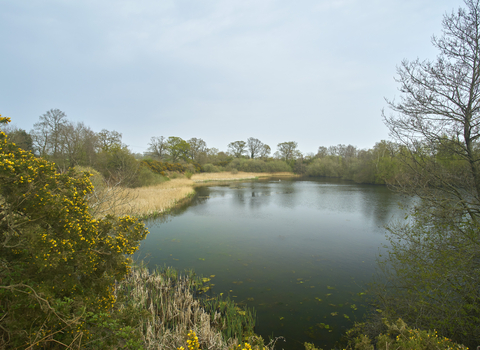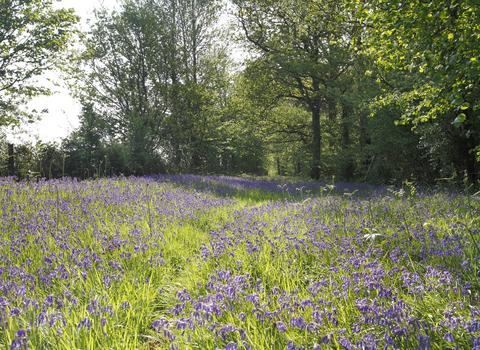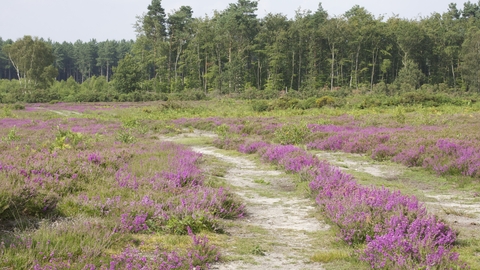
Buxton Heath (credit: Dominic North)
Purple heather at Buxton Heath (credit: David North)
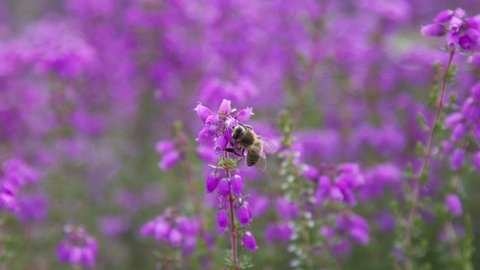
Bee and heather at Buxton Heath (credit: Dominic North)
Buxton Heath
Location
Know before you go
Dogs
When to visit
Opening times
Dawn till dusk, every day, all year roundBest time to visit
Spring and summerAbout the reserve
Buxton Heath is managed by NWT in partnership with the owners Hevingham Fuel Allotment Charity. The site is one of the best examples of dry, acidic heathland in Norfolk. Nourished by a ‘valley mire’ running through its heart, the heath is awash with stunning purple heather during the summer months.
Home to the beautiful silver-studded blue, this re-introduced butterfly is thriving here, and Buxton Heath is one of the best locations in East Anglia to see it. Other butterflies you might see during a visit include purple hairstreak, green hairstreak and white admiral. Dragonflies including keeled skimmer, can also be found here.
There’s a range of rare heathland plants and invertebrates here, and the site is particularly important for breeding nightjar and woodlark.
Take an early morning visit in spring, and you may be treated to the beautiful song of the woodlark. Return on a warm, still, summer evening and you may catch a glimpse of a hawking nightjar. Listen out for its strange, vibrating churring call.
Heathland is one of the world’s most threatened habitats. Our extensive restoration work at Buxton Heath has resulted in its recovery and expansion.
Habitat
Contact us
Environmental designation
Seasonal highlights
Spring
Birds: woodlark.
Invertebrates: green hairstreak butterfly.
Plants: white beaked sedge.
Reptiles: adder.
Summer
Birds: nightjar.
Invertebrates: silver-studded blue butterfly, keeled skimmer dragonfly.
Plants: grass-of-Parnassus, marsh helleborine.
Reptiles: slowworm.
Autumn
Invertebrates: bog bush crickets.
Plants: round-leaved sundew.
Winter
Birds: stonechat.
Plants: common gorse.


